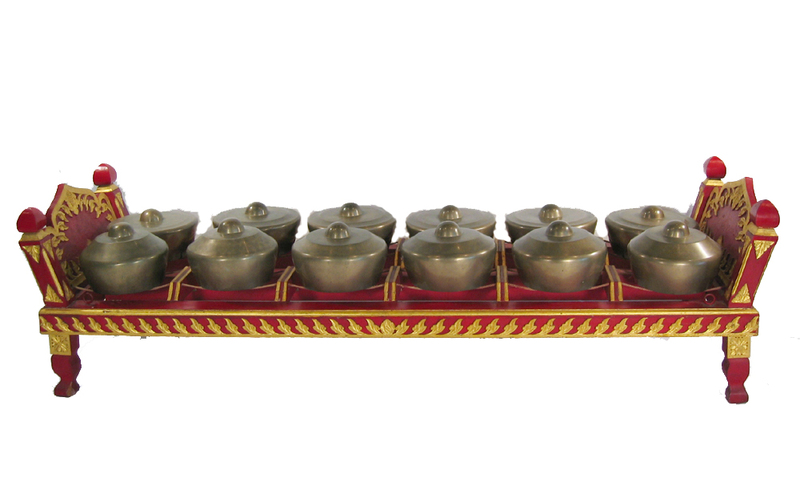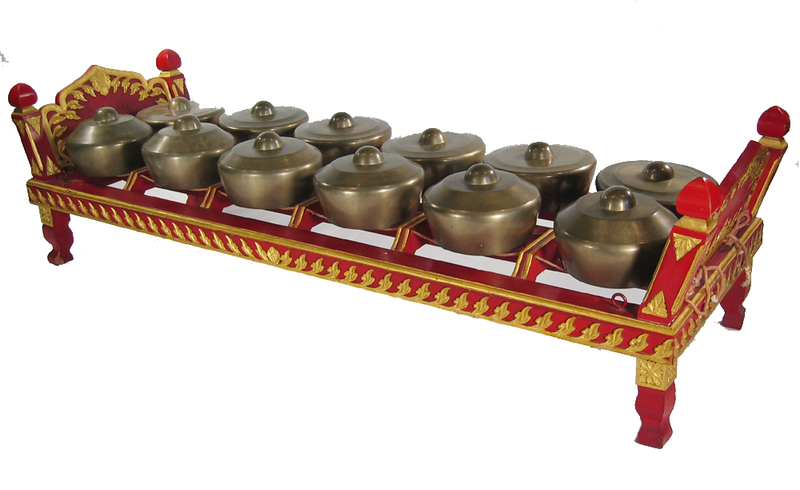Bonang
Title
Video
Physical description
The bonang consists of two rows of horizontal gong-kettles with the open side facing down, which is placed on cords stretched over a rectangular wooden-frame. A full gamelan set has two kinds of bonang: bonang barung and bonang panerus; the latter is one octave higher than the former (its lower octave overlaps with the higher octave of bonang barung). Depending on the tuning system, a bonang may have fourteen gong-kettles for pelog (seven in each row), or twelve or ten for slendro (six or five in each row). Some gamelan may also have bonang panembung, a bonang whose octave range is one octave lower than bonang barung.
Historical background
Evidence of gong-kettle type instruments can be found in the drawings of these instruments on the walls of old temples. The drawing of gong-kettles on the wall of the 14th-century Panataran temple in East Java is quite revealing. It consists of two small gong-kettles vertically mounted on two side ends of a bar. (This instrument can still be found and played in contemporary Bali). Perhaps there was a period of development from this type of instruments to instruments with gong-kettles resting on a frame with the open side facing down, such as bonang, kethuk-kempyang, and kenong. As gamelan developed into an expansive ensemble, together with the emergence of repertoire that employs wider registers, bonang with wider octave range were constructed to accommodate this development.

